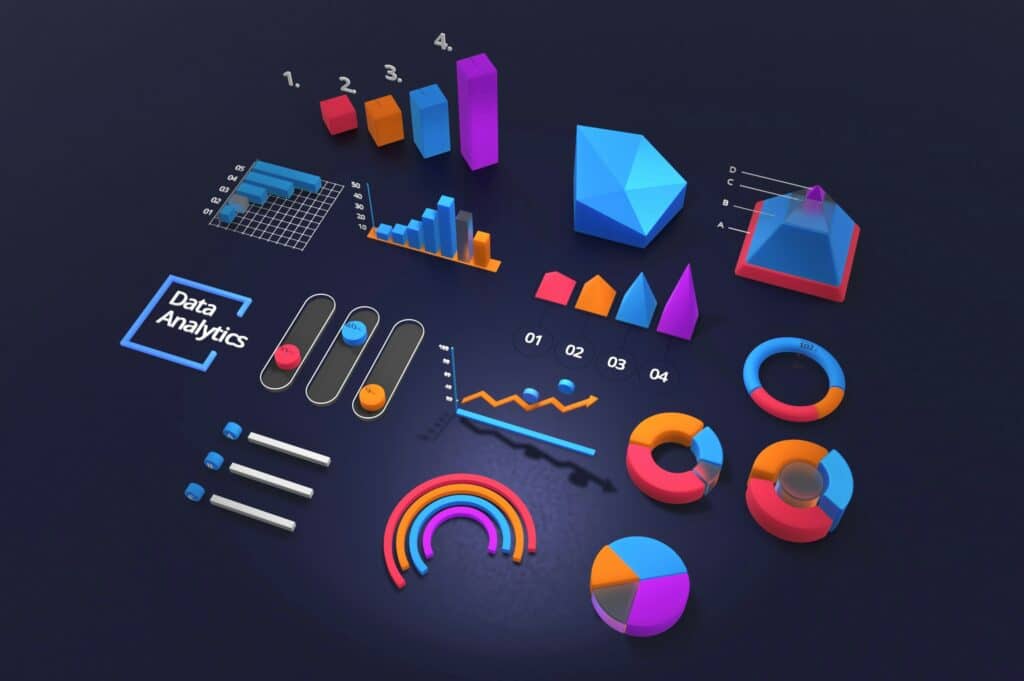In the ever-changing landscape of digital signage, understanding audience behaviour is not just beneficial, it’s essential. Leveraging analytics to create data-driven content transforms digital signage from simply decorative displays into strategic communication tools. This blog explores how digital signage analytics can enhance effectiveness by collecting and interpreting data, tailoring content accordingly, utilising analytical tools, and reviewing successful case studies.
Collecting and Interpreting Audience Data
The foundation of effective digital signage is built upon understanding audience interaction. Digital signage analytics provide detailed insights into how viewers engage with displayed content. By accessing key metrics, such as viewer demographics, dwell time, interaction rates, and peak engagement hours, businesses can unlock powerful insights.
Collecting data involves employing tools such as integrated cameras, sensors, and interactive touchscreens. These instruments capture user activity, providing a granular view of audience interaction. The interpretation stage transforms raw data into actionable insights. For instance, analytics might reveal that specific content types significantly increase viewer dwell time during lunchtime. Knowing this enables content schedulers to maximise impact exactly when audience attention peaks.
By routinely reviewing data, businesses develop a clearer picture of their audience segments. Always ensure you act in accordance with GDPR regulations as outlined by the ICO. This understanding helps marketers to create highly relevant content, increasing engagement and ultimately driving desired outcomes.

Tailoring Content Based on Insights
Merely collecting data is only half the job. The true power of digital signage analytics lies in using insights effectively. Tailoring content based on analytical findings ensures messages resonate strongly with specific audiences, increasing the likelihood of achieving your company goals.
Consider this example: Digital signage deployed within corporate environments often targets internal communications. If analytics indicate that staff engage most actively with short, concise updates rather than lengthy, information-heavy ones, the content should reflect this preference. Similarly, retailers might identify products receiving higher interaction rates, prompting them to amend promotional content to highlight these popular items.
Adapting content dynamically, based on evolving audience preferences, ensures displays remain relevant and engaging. This personalised approach not only enhances the viewer experience but also optimises messaging efficiency, making digital signage an excellent communication tool.
Tools for Data Analysis
Harnessing digital signage analytics requires the right tools. Fortunately, lots of modern platforms incorporate analysis functionalities that help you to easily see your data and reporting.
Platforms featuring intuitive dashboards (such as our digital dashboard solution) allow businesses to visualise complex data in a clear way. Real-time metrics, reports, and detailed breakdowns of viewer interactions make it easier to interpret trends and quickly respond to audience shifts. Dashboards often feature customisable widgets that highlight relevant KPIs, ensuring decision-makers have essential information at their fingertips.
Additionally, advanced analytics tools support AI-driven features, including predictive analysis. These sorts of capabilities enable businesses to predict engagement levels and adapt content proactively, and enable businesses to anticipate future behaviours based on past data.
Case Studies of Data-Driven Signage Success
Real-world examples demonstrate the tangible benefits of digital signage analytics in action. Let’s examine two cases illustrating effective deployments:
Retail: Increasing Sales Through Targeted Promotions
A high-street fashion brand utilised digital signage analytics to assess engagement with different promotional offers. Analysis revealed shoppers interacted more frequently with signage promoting seasonal discounts over general branding. Responding to this insight, the retailer adjusted their promotional displays to emphasise time-sensitive offers. The result of this was a notable uplift in sales, highlighting how data-driven changes are incredibly powerful in improving business performance.
Corporate Communications: Enhancing Employee Engagement
A global financial organisation implemented digital signage for internal communications across multiple sites. Analytics indicated staff engagement peaked during brief, visually appealing messages delivered in short, regular bursts. Adapting their internal communications strategy accordingly, the company saw significantly increased employee awareness and responsiveness to important organisational updates.
These examples highlight the value of interpreting audience analytics accurately and responding decisively. Businesses that consistently look and act on their analytics usually experience measurable improvements in content effectiveness, audience engagement, and overall performance.
Digital signage analytics are no longer optional; they’re integral to ensuring signage solutions deliver maximum value. By consistently collecting and interpreting relevant data, businesses can strategically tailor content to resonate with specific audiences. Equipped with powerful analysis tools and supported by real-world case studies, organisations learning from their digital signage analytics are positioned to achieve continued success in communication efforts.
Ready to boost the impact of your digital signage? Start embracing data-driven content today.
